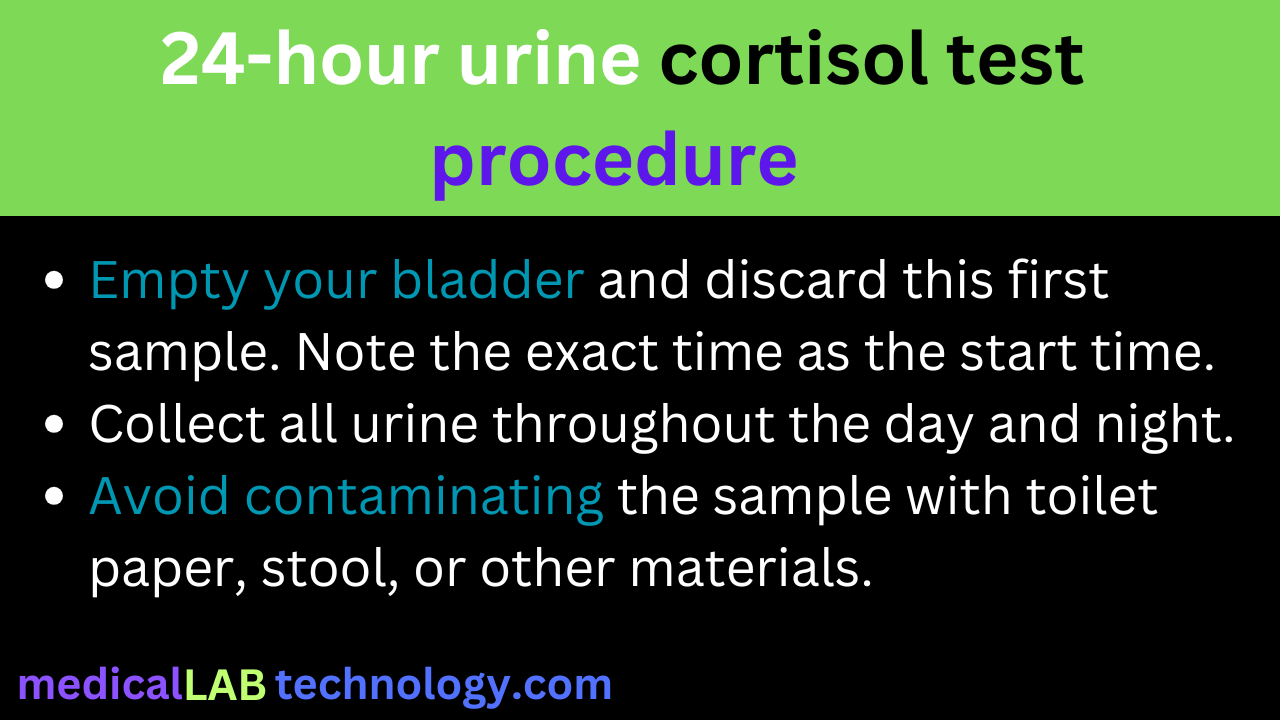The 24-hour urine cortisol test is a diagnostic tool. It measures the amount of cortisol excreted in urine over a full day. This test helps evaluate adrenal gland performance and diagnose conditions like Cushing’s syndrome or Addison’s disease.
In this article, you will learn about the purpose, procedure, and key considerations for the 24-hour urine cortisol test.
What Is a 24-Hour Urine Cortisol Test?
Purpose of the Test
Cortisol is a hormone produced by the adrenal glands that helps regulate metabolism, immune response, and stress. Abnormal cortisol levels can show:
- Cushing’s Syndrome: Excess cortisol production.
- Addison’s Disease: Insufficient cortisol production.
- Stress or Other Disorders: Temporary changes in cortisol levels.
Why Use a 24-Hour Collection?
A 24-hour urine test provides a comprehensive overview of cortisol levels. Unlike a single urine or blood sample, it accounts for daily fluctuations.
Preparation for the Test
Instructions Before the Test
- Consult Your Doctor: Inform your healthcare provider about any medications or supplements you’re taking, as they can affect cortisol levels.
- Avoid Certain Substances: Some substances, like corticosteroids, caffeine, and alcohol, interfere with the test results.
- Dietary Restrictions: Your doctor may recommend avoiding specific foods like licorice, which can influence cortisol production.
Instructions for Collecting Materials
Your healthcare provider will supply:
- A large, sterile collection container.
- Instructions for proper storage and handling.
Step-by-Step Procedure for 24-Hour Urine Cortisol Test
Instructions for Starting the Collection
- Morning Start: Start the test in the morning (e.g., 7:00 AM).
- Discard First Urine: Empty your bladder and discard this first sample. Note the exact time as the start time.
Instructions for Collecting All Urine Over 24 Hours
- Use the provided container to collect all urine throughout the day and night.
- Make sure that the container includes the preservative reagent (e.g., 10 mL of concentrated HCl) to stabilize the sample. This reagent is typically pre-added by the lab, but confirm before starting. If not, add it carefully following lab instructions.
- Store the container in a cool place, such as a refrigerator, to prevent sample degradation.
- Avoid contaminating the sample with toilet paper, stool, or other materials
Instructions for Completing the Collection
- The next morning, exactly 24 hours after the start time, collect your final urine sample.
- Seal the container and ensure it’s labeled with your name, date, and start/end times.
Instructions for Submitting the Sample
- Deliver the container to your healthcare provider or lab as instructed.
- Guarantee timely submission, as delays may compromise the test’s accuracy.
Interpretation of Results
Normal Cortisol Range
The normal range for cortisol in a 24-hour urine sample is typically between 10-100 micrograms per day. However, values may vary by lab.
Abnormal Results
- High Cortisol Levels: Show Cushing’s syndrome, stress, or hyperthyroidism.
- Low Cortisol Levels: Suggest Addison’s disease, hypothyroidism, or adrenal insufficiency.
Confirmatory Testing
If results are abnormal, extra tests are necessary. These tests include blood cortisol levels or imaging studies for a definitive diagnosis.
Factors Affecting Test Accuracy
Potential Interference
- Medications: Hormones, diuretics, or steroids skew results.
- Stress and Illness: Temporary factors can elevate cortisol levels.
- Improper Collection: Missing samples or contamination lead to inaccurate readings.
Best Practices
- Follow instructions meticulously.
- Inform your doctor about any unusual circumstances during the collection period.
FAQs About the 24-Hour Urine Cortisol Test
1. Is the Test Painful?
No, the test is non-invasive and involves only urine collection.
2. How Should I Store the Sample?
Keep the container refrigerated or in a cool place during the 24-hour collection period.
3. Can Stress Affect My Results?
Yes, stress can temporarily elevate cortisol levels, so try to stay relaxed during the test period.
